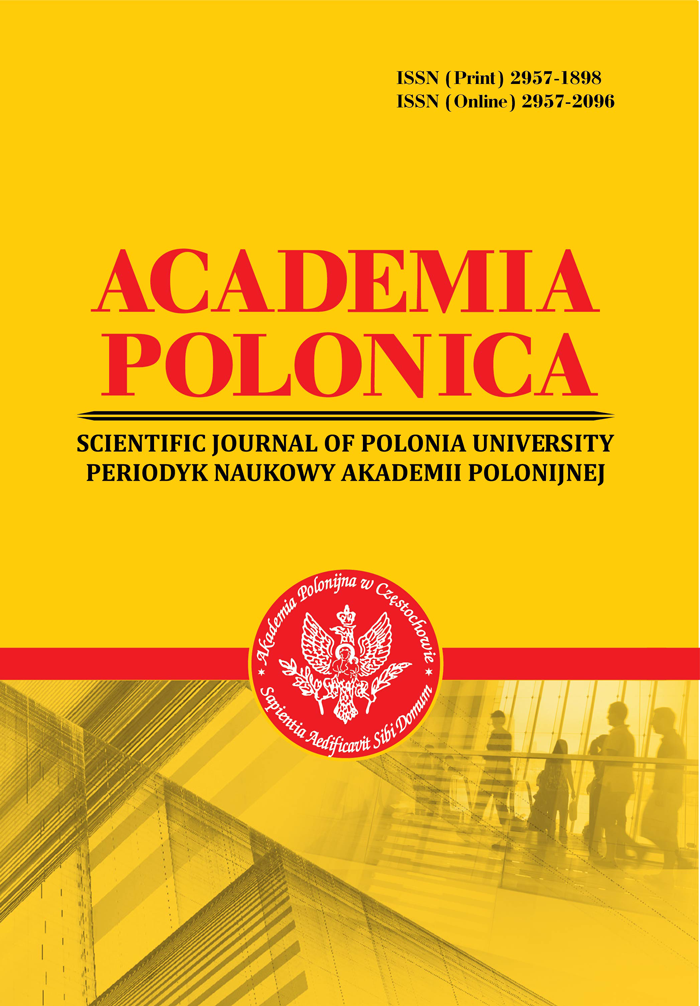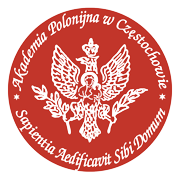DIRECTIONS FOR IMPROVING THE DIGITALIZATION OF FINANCIAL TECHNOLOGIES IN UKRAINE
Abstract
The article analyzes the essence of the state regulation of digitalization of the financial system of the state, taking into account the changing political and economic situation in Ukraine. The main conceptual approaches to the definition of basic terms are considered, and the features and purpose of digitalization of financial technologists are defined. The peculiarities of the formation of the Fintech system are clarified. It is determined that the financial technology industry includes many tools, including: computers, smartphones, tablets, cloud technologies, artificial intelligence, machine learning, augmented and virtual reality, and many others. It is concluded that the process of digitalization of financial technologies is at the stage of its development and requires adjustment of its individual directions. It is determined that in Ukraine, digital financial services are provided by three types of companies: traditional financial institutions, startups that introduce new formats of financial services, and large technology companies that are actively expanding their presence in the financial sector. The main factors that influence the development or inhibition of the development of the digitalization system of the financial technology industry are considered. The main measures that will contribute to the digitalization of the financial sector at both the global and national levels are highlighted. The author proposes priority areas for improving the processes of digitalization of the financial sector in Ukraine, among which an important, key role is played by the creation of an appropriate system of legal support for these processes.
References
2. Emerging Role of Data and Fintech in the Development of Digital Economy (2021). URL: https://www.ncc.gov.ng/documents/985-emerging-role-of-data-and-fintech-in-the-development-ofdigital-economy/file [in English].
3. Shyshkina, O. V. (2023). Digital technologies of financial institutions: risks and prospects for use. The Actual Problems of Regional Economy Development, 2(19), 130–143. https://doi.org/10.15330/apred.2.19.130-143. [in Ukrainian].
4. De Filippi, P., & A.Wright (2019) “Blockchain and the Law: The Rule of Code.” Harvard University Press, 2019.Oct 4. Hup, hup.medium.com/the-rule-of-code-vs-the-rule-of-law-8dfe-75631fee. [in English].
5. Tapscott, D., Tapscott A. (2014) Blockchain Revolution: How the Technology Behind Bitcoin Is Changing Money, Business, and the World. URL:https://www.amazon.com/Blockchain-Revolution-Technology-Changing-Business/dp/1101980133 [in English].
6. Shiklo, B. (2020) IoT for Smart Banking and Finance. URL: https://www.scnsoft.com/blog/iot-in-banking-and-financial-services [in English].
7. Ethereum Smart Contract Security Best Practices. URL: https://consensys.github.io/smart-contract-best-practices/ [in English].
8. Doroshenko, Olena O. (2023) Stanovlennya sektoru Fintech: mozhlyvosti ta ryzyky v umovakh tsyfrovoyi ekonomiky (Formation of the fintech sector: opportunities and risks in the conditions of the digital economy). Aktual'ni Problemy Ekonomiky. 2023. № 1 (259). С. 24-34. DOI:10.32752/1993-6788-2023-1-259-24-34. [in Ukrainian].
9. Kovalenko, V.V.(2020) Rozvytok finansovykh innovatsiy u nebankivsʹkykh finansovykh ustanovakh [Development of financial innovations in non-bank financial institutions]. Pryazovsʹkyy ekonomichnyy visnyk. Vyp. 1. S. 244–250. [in Ukrainian].
10. Al_Kasasbeh, O., Khasawneh, O., & Alzghoul, A. (2023). The Real Effects of Fintech on the Global Financial System. International Journal of Professional Business Review, 8(3), e01725. https://doi.org/10.26668/businessreview/2023.v8i3.1725 [in English].
11. Chong,A., Lim, E., Hua, X., Zheng, S., & Tan, C. (2019). Business on chain: A comparative study of five blockchain-inspired business models. Journal of Association for Information Systems, 20(9), 1310–1339. http://dx.doi.org/10.17705/1jais.00568 [in English].
12. Ebrahimi, M. (2023). Business Models in Financial Technologies. In Mainstreaming Cryptocurrency and the Future of Digital Finance (pp. 118-137). https://doi.org/10.4018/978-1-6684-8368-8.ch005 [in English].
13. Feyen, E., Frost, J., Gambacorta, L., Natarajan, H., & Saal, M. (2021). Fintech and the digital transformation of financial services: Implications for market structure and public policy. Bank for International Settlements. ISSN 1682-7651. [in English].
14. Chunytsʹka, I., & Bohrinovtseva, L. (2023). Vplyv tsyfrovykh tekhnolohiy na rozvytok finansovoho rynku Ukrayiny [The influence of digital technologies on the development of the financial market of Ukraine]. Ekonomika ta suspilʹstvo, (49).https://doi.org/10.32782/2524-0072/2023-49-60. [in Ukrainian].
15. Mazaraki, A. and Volosovych, S. (2018). Fintech in the system of social transformations, Visnyk KNTEU, vol. 2, рр. 5–16. [in English].
16. Kalashnikova, T.V. and Samokhina, S.A. (2018). Market development for financial technologies in Ukraine as a factor of promoting financial inclusion”, Visnyk KhNAU im. V.V. Dokuchaieva, Seriia Ekonomichni nauky, vol. 3, рр. 201–210. [in English].
17. Communication from the Commission to the European Parliament, the Council, the European Economic and Social Committee and the Committee of the regions on a Digital Finance Strategy for the EU. Brussels, 24.9.2020 COM (2020) 591 final URL: https://eur-lex.europa.eu/legal-content/EN/TXT/?uri=CELEX%3A52020DC0591 [in English].
18. New technology key to globalization of digital economy, (2021). URL: https://global.chinadaily.com.cn/a/202104/30/WS608b5b25a31024ad0babb6be.html/ [in English].
19. Fintech in a Global Economy: Finding balance between innovation and stability, (2018). URL: https://www.bbva.com/en/fintech-in-a-global-economy-finding-balance-between-innovation-andstability/ [in English].
20. Latkovsʹka, T. A. (2021) Finansovo-pravove rehulyuvannya suspilʹnykh vidnosyn v umovakh tsyfrovoyi transformatsiyi [Financial and legal regulation of social relations in conditions of digital transformation]. Finansove pravo v umovakh tsyfrovoyi transformatsiyi :kolektyvna monohrafiya / za zah. red. T. A. Latkovsʹkoyi. Chernivtsi: Tekhnodruk. 418 s. URL: https://dspace.onua.edu.ua/server/api/core/bitstreams/ca6856e0-00c1-4bbf-9cbe-6ed64851489f/content [in Ukrainian].
21. Reyestratsiya platnyka PDV. Portal Diya. URL: https://guide.diia.gov.ua/view/reiestratsiia-platnyka-podatku-na-dodanu-vartist- [in Ukrainian].
22. Kuznyetsova, N. (201 6) Netypovi obʺyekty prava vlasnosti v konteksti statti 1 pershoho Protokolu do Konventsiyi pro zakhyst prav lyudyny i osnovopolozhnykh svobod [Atypical objects of property rights in the context of Article 1 of the first Protocol to the Convention on the Protection of Human Rights and Fundamental Freedoms]. Pravo Ukrayiny. № 1. S. 34-40. [in Ukrainian].
23. Tsyvilʹnyy kodeks Ukrayiny Civil Code of Ukraine]: Zakon vid 16.01.2003 № 435-IV.URL: https://zakon.rada.gov.ua/laws/show/435-15#Text [in Ukrainian].
24. Podatkovyy kodeks Ukrayiny [Tax Code of Ukraine]: Zakon vid 02.12.2010 № 2755-VI. URL: https://zakon.rada.gov.ua/laws/show/2755-17#Text [in Ukrainian].
25. Pro banky i bankivsʹku diyalʹnistʹ [On banks and banking activity]: Zakon Ukrayiny vid 07.12.2000 № 2121-III. URL: https://zakon.rada.gov.ua/laws/show/2121-14#Text [in Ukrainian].
26. Ovcharenko, A. S. (2021) Horyzontalʹnyy podatkovyy monitorynh yak prohresyvnyy sposib zdiysnennya podatkovoho kontrolyu: perspektyvy zaprovadzhennya v Ukrayini [Horizontal tax monitoring as a progressive method of tax control: prospects for implementation in Ukraine]. Yurydychnyy naukovyy elektronnyy zhurnal. № 8. S. 246-249.URL: http://www.lsej.org.ua/8_2021/57.pdf [in Ukrainian].
Abstract views: 198 PDF Downloads: 57







